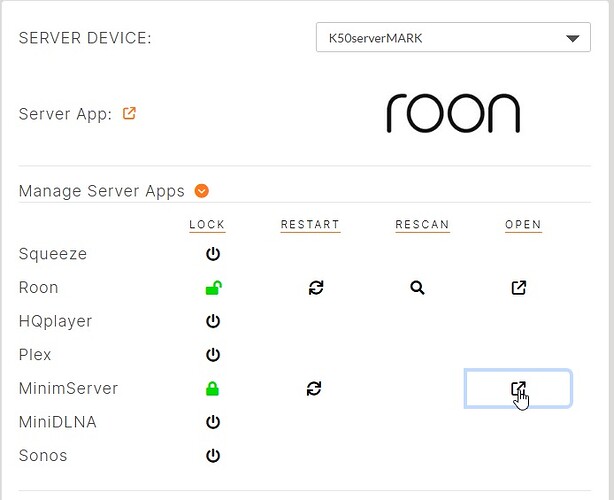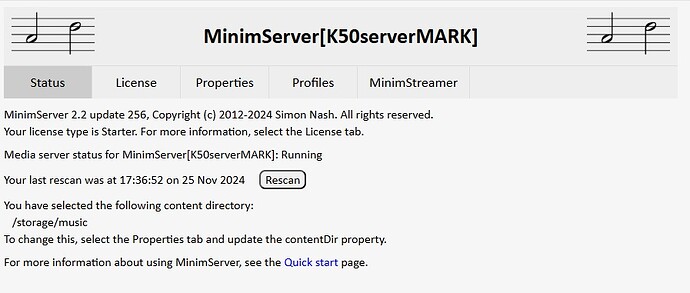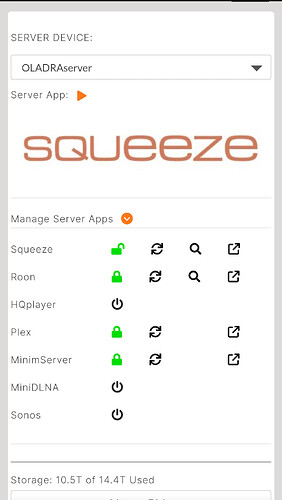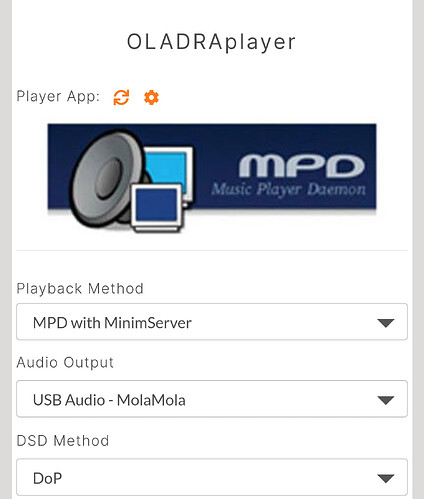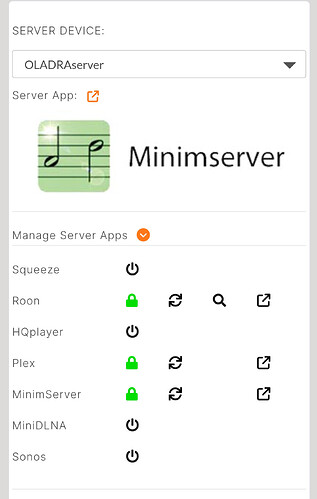This is a fantastic post, @NickBacon .
Don’t get me wrong. It did here, but only when I alternated all the time between discussed options, JPLAY sort of lost it. at one point I also noticed I had two iPads with JPLAY open, maybe that did not help either, specially when the Update Time was set to higher intervals.
Yeah I did ![]()
Nick, I appreciate your insights and truly trust your opinion. It seems that different presets are increasingly converging, suggesting that anything below the Oladra might not be discernibly different. I also noticed that Christiaan Punter, whose opinion I also highly value, only over the past 12 months has shifted from exclusively using Roon to a combination of Squeeze + Squeeze, and now MPD + MinimServer.
I want to emphasize that when it comes to how tracks sound, we can reach a point where system effects and the listening environment become the primary influences on our experience. The environment can significantly impact what we hear, sometimes even more than the technical measurements of individual components or speakers. If this enhances the overall listening experience, I’m completely on board with that.
Enjoy exploring and embracing the joy that music brings us!
Always good to read your comparison insights Nick, thanks.
It may be good to revisit the preferred choice of SSD storage: Is this with the Samsung PM893?
edit: I assume also this is the same resolution for both for stored and streamed-16/44? Flac?
@watts My SSD are unchanged from what I originally installed in my K50 and the transferred them to the Oladra. They are the Samsung 860 EVO.
The albums compared streamed and played from local files were exactly the same. The locally stored ones were purchased from the Qobuz site and the streamed version was the same file and resolution (24bit 96k)
It’s interesting that you mention the music SSD. Apologies if I’m repeating myself—this may have come up in a different thread—but in addition to being highly recommended by Antipodes for music file storage, JCAT also utilizes an “industrial-grade SSD, carefully selected for its distinctive sound qualities”—specifically, the PM893 SSD available in 4GB or 8GB capacities. Coincidence?
To lift performance further, in their latest flagship server, the JCAT XACT S1, the music SSD is connected to the motherboard with a 40 cm directional, cryo-treated SATA cable made with copper/silver conductors.
While in Oladra you can choose the PM893 for storing music files (the 3 slots on top in the image), the Oladra server already comes with a pre-installed PM893 dedicated to the operating system (in center, based on this image from Sept '23), whereas the XACT S1 runs its OS from an industrial SD card (very recent image).
Just more on using JPLAY for iOS with Squeeze + Squeeze (with the two UPnP plug ins enabled) compared to Squeeze + Squeeze and using the Material Skin or iPeng as the controller, I notice no difference at all in sound between all of these.
It is probable therefore that I will use JPLAY for iOS for music selection for the locally stored ripped files on the Oladra SSD and will use the Material Skin or iPeng interfaces when I want to listen to BBC radio 3 on the BBC Sounds app. I rarely listen to streamed music apart from sometimes the internet station HD The Blues and then it will be Material or iPeng used to select that. Often I will listen to the blues on that station for hours at a time whilst reading so once selected I just leave it playing whilst reading a book.
One thing I have noticed is that the Player settings on JPLAY can cause playback issues (renderer error messages or no music) so I am tending the leave them all unchecked at the moment just to be safe. Next time I have time I will see which one or ones were causing the error messages and no music.
This query is not quite in line with the openning post wueries, but fits under the general heading and follows the discussion that has occurred.
I presently use roon which has improved alot over the year. Squeeze is not an option for me, but I am wondering about trying Upnp Minimserver with JPlay as controller. It seems to be alot more setting up compared to roon, but is it worth the effort?
Has anyone here recemtly compared SQ of roon to MPD+minimserver+JPlay?
Does the latter include PEQ and upscaling like roon?
Can I export playlists from roon to JPlay?
Is Antipodes going to enable JPlay femtoServer to be installed?
There isn’t much to enabling MinimServer on an Antipodes, if you haven’t started it before, you need to launch the MinimServer page and accept Terms and Conditions, that’s all that is required to have Minim enabled
Or this, if you are running multiple servers:
Once it’s running, it’s running, and you never have to go back to that page
No PEQ or upscaling.
If you use Tidal or Qobuz, your playlists will be imported from the native apps.
Roon playlists can be exported and re-imported, a bit of faffing around, but possible.
JPLAY Femto Server is NOT available on Linux. Antipodes Audio includes two UPnP servers in MinimServer and MiniDLNA. Additionally, UPnP can be enabled in Squeeze to act as a server.
The combination of servers, players and solutions on AMS continues to confuse me. Just to clarify (for myself and anyone else who looks in future):
- Running minimserver as a second server (for example with roon server also running) the way described above will not let you use Jplay for streamed files as far as i can see - this will only work with local files. To use Jplay for streamed files you would have to select MPD+minimserver solution
- if you select MPD+minimserver it turns roon server off, which you can turn back on, but in my case i then have no player device in roon
- if you try to use jplay for local files only using either squeeze or minimserver, selecting for example ‘local albums’ in jplay actually shows all your albums inlcuding albums from streaming services which has me completely stumped as i would expect only locally stored albums to appear in this list
I’m not sure I explained myself clearly, and may not be doing that below, but I’ll give it a go.
The Dashboard allows you to lock servers if required.
Above I am running Squeeze/Squeeze as a solution, however I have Roon server, MinimServer and Plex server locked on, all these servers are available on my network.
As Squeeze/Squeeze is the solution, I only have Squeeze available to the attached DAC via USB in my “office”
I also have Plex available to my phone in the car, I have Roon server available to my DX endpoint in the lounge, and I have MinimServer available as a UPnP solution to my wife’s Yamaha in the kitchen.
I could use JPLAY in this instance to run UPnP from MinimServer to the Yamaha UPnP endpoint, as well as listen to Squeeze in the office, Roon in the lounge, and Plex in my car all at the same time.
To use JPLAY to output to the attached USB DAC, you need to select MinimServer and MPD.
As Squeeze server wasn’t locked it is not available as a server, because I’ve switched to MinimServer+MPD, however Roon and Plex are still available to my other endpoints.
I’m not 100% on what you mean by streamed and local in JPLAY, in the JPLAY app you select the streamed services and local library you want to be available in JPLAY.
It’s likely that when using Squeeze server you are seeing the whole library including your streaming services
Must admit having moved over from Roon to Squeeze over the past few months and seriously impressed with the improvement in sound quality this option is so close with the benefit of a far superior interface , recommended music etc similar to Roon.
Just tried minimserver on Oladra (server only/disable player), MSB Renderer V2 as player with JPLAY. It brought so much more in the music: soundstage/sense of space becomes more real, the vocals are more focused too. Glad my friend persuaded me into this combination. Previous settings was squeeze/squeeze (Material) with USB output to Pro-ISL into MSB Reference Digital Director.
One great thing of owning Antipodes is the options to use literally every app in the market and find the best sound that suits different systems.
Fwiw…just cancelled my 1 year subscription and replaced it with a lifetime subscription. Really like Jplay.
I’ve been using JPlay for some time now. Recently I have been playing HQ Player through JPlay. It still has the lag that it does with Roon.
Select HQPlayer in the Antipodes Solution Dashboard then go to JPlay and select settings. In Audio Output select the name for your HQ player. Make sure that in Device Discovery the Disable HQPlayer discovery remains unchecked.
Regarding sound quality, I currently prefer MDP with MinimServer but HQ player provides up and downsampling, filters and convolution capabilities to be explored.
For those of you who listen to BBC radio stations, BBC changed URLs again. The below link will have an updated list of streaming URLs.
I have been using J Play using what Mark recommends and it sounds so close to Squeeze plus has a far better interface, for the money it’s worth every penny having tried Roon again recently it simply doesn’t compare in terms of sound quality despite having the best IOS.
Hi Nick; I just took my trial of Jplay and like it so far though SQ not quite equal to Squeeze and see you are our resident Squeeze/Jplay guru.![]() I guess I must be missing something because I cannot seem to locate what you refer to as “Material.” It doesn’t present in Squeeze Server settings or anywhere else within the app insofar as I can determine.
I guess I must be missing something because I cannot seem to locate what you refer to as “Material.” It doesn’t present in Squeeze Server settings or anywhere else within the app insofar as I can determine.
Can you give a brother some help here and point me to where I find this “Material” so I can follow the rest of your prompts and hopefully accomplish the goal of listening to Squeeze with the Jplay interface?
Thank you!
Hope this helps. It will only work with local files (as you prefer), JPLAY Overlay, and Squeeze to Squeeze. Also, make sure to set the update time in JPLAY to the maximum (see the last picture).
Material :
JPLAY :
Even though control devices like an iPad or the JPLAY app don’t process audio directly, both software and the hardware they run on can still affect sound quality through their influence on network traffic, timing, and noise. Using optimized connections and setups can lead to noticeable improvements.




